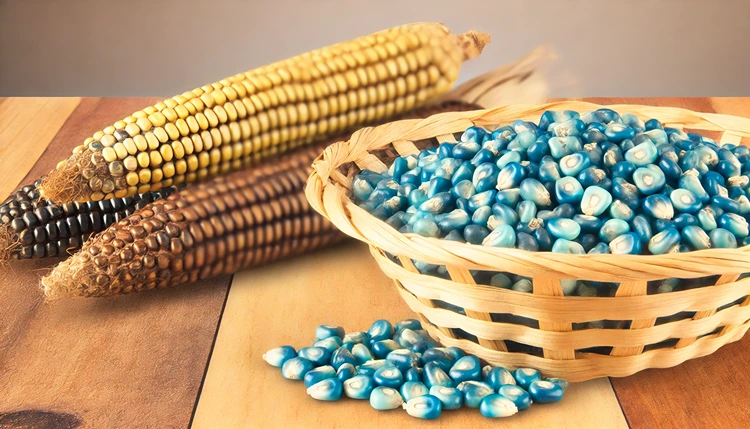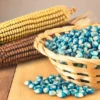When people talk about maize and corn, they’re often referring to the same thing—right? Well, yes and no. In the context of Aztec culinary history, the distinction between maize and corn is much more than just a matter of different words. Maize, as the Aztecs knew it, was the heart of their culture, cuisine, and daily life. But when we say “corn” today, we usually mean the sweet, yellow kernels that you find at a summer barbecue. So, what’s the difference between maize and corn, and why does it matter so much in the context of Aztec history?
The keyphrase we’ll be exploring throughout this article is “Maize vs Corn in Aztec Culinary History.” By understanding how maize shaped the Aztec diet and way of life, and how it evolved into what we now call corn, we can get a clearer picture of its significance and the rich flavors it continues to offer in modern Mexican cuisine.
What Was Maize in Aztec Culture?
In Aztec society, maize wasn’t just food—it was life. The crop held a sacred place in their beliefs, mythology, and everyday existence. It was more than just a staple; it was a connection to the gods. Maize, with its different varieties and colors, represented diversity and abundance. Its ability to be transformed into multiple dishes, from tortillas to tamales, made it the cornerstone of Aztec cuisine.
How Did the Aztecs Use Maize in Cooking?
The versatility of maize was unparalleled. The Aztecs used every part of the plant, from the cob to the husk. They would grind the kernels into a fine dough called masa, which was the foundation for making tortillas. Tortillas, in turn, became the base for other beloved dishes, such as tlacoyos and huaraches.
Aztec women were skilled at nixtamalization, a process that involved soaking maize in an alkaline solution, usually made from limewater, to remove the hull and soften the kernels. This practice not only made the maize easier to grind but also unlocked essential nutrients, making the food more nourishing. From masa, they made tamales, atole (a warm maize-based drink), and countless other dishes.
Is Corn Really the Same as Maize?
When we say “corn” today, we’re typically thinking of the sweet, golden variety that dominates in the United States and other parts of the world. But corn, in its broader sense, refers to any grain, including wheat and barley. Maize, however, is the specific crop that the Aztecs cultivated.
While modern corn can be traced back to the maize of the Aztecs, selective breeding and agricultural techniques have changed it significantly. The sweet, juicy kernels you find on your dinner plate bear little resemblance to the more starchy and versatile maize that was central to Aztec life. The differences between maize and corn lie not only in their appearance but also in their uses and cultural importance.
How Did Maize Transform into Modern Corn?
Through centuries of cultivation and cross-breeding, farmers gradually developed the sweet corn we know today. The Aztecs, however, grew maize primarily for its ability to be stored, processed, and made into a variety of dishes. Unlike modern corn, which is often eaten fresh or canned, maize was primarily ground into flour or masa. The transformation from maize to corn reflects broader agricultural and culinary shifts over time.
Why Maize Was Sacred to the Aztecs
To the Aztecs, maize was more than just a crop—it was a gift from the gods. Their mythology tells the story of how maize was discovered by the god Quetzalcoatl, who brought it to the people as a gift. Because of this divine origin, maize played a crucial role in religious ceremonies, festivals, and everyday life.
Maize was considered essential for both physical nourishment and spiritual well-being. Its presence in so many facets of life made it the cornerstone of Aztec society. Every meal, every celebration, and every offering to the gods involved maize in some form.
Helpful Hint:
Want to try cooking like the Aztecs? Start by experimenting with nixtamalization. This ancient technique not only makes maize easier to grind but also boosts its nutritional value. You can buy whole dried maize from specialty stores and try the process at home for a more authentic flavor.
Maize vs Corn: Which One Did the Aztecs Eat?
When you think about “maize vs corn in Aztec culinary history,” it’s clear that maize was the crop that shaped their world. Corn, as we know it today, is a distant cousin of the maize the Aztecs relied on. Maize came in various colors and varieties, including red, blue, and even black. Each variety was used for different dishes, with some being preferred for tortillas, while others were better suited for tamales or beverages like atole.
Modern corn, while delicious in its own right, doesn’t hold the same cultural weight as maize did for the Aztecs. Corn is more of a commercial product today, often used for syrup, feed, and snacks. But for the Aztecs, maize was an essential element of survival, offering sustenance in many forms.
Key Differences Between Maize and Modern Corn
| Characteristic | Maize (Aztec) | Modern Corn |
|---|---|---|
| Cultivation Purpose | Primarily for masa, tamales, atole, and tortillas | Sweet corn for eating, field corn for feed, and industrial uses |
| Varieties | Multiple varieties: blue, red, white, black | Mostly yellow and white varieties, with some sweet corn types |
| Processing | Nixtamalization to enhance nutrition and flavor | Usually eaten fresh, boiled, or roasted |
| Flavor | Earthy, robust, with more complexity | Sweet and juicy (in sweet corn types) |
| Cultural Significance | Deeply tied to Aztec spirituality and rituals | Used in global food production, less cultural significance |
How Maize is Used in Modern Mexican Cuisine
Though we now have many varieties of corn, maize continues to be a vital ingredient in Mexican cuisine. The tradition of using maize to make masa persists, with tortillas, tamales, and other dishes remaining central to Mexican culinary culture. Maize also plays a role in modern street foods, like elotes and esquites, which are roasted or boiled maize kernels served with lime, chili, and cheese.
In rural areas, many families still practice traditional maize farming methods, cultivating heirloom varieties that have been passed down through generations. These maize varieties offer a deeper, more complex flavor compared to commercial corn and remain an important part of local diets.
Why Heirloom Maize Varieties Matter
Heirloom maize varieties aren’t just about flavor—they’re also about preserving history and biodiversity. Many modern corn hybrids are bred for uniformity and shelf life, while heirloom maize retains the diversity that was so important to the Aztecs. These varieties are often more resilient and adapted to their specific environments, making them a key part of Mexico’s agricultural heritage.
“Maize was not only food for the body; it was also food for the soul. It connected the people with the earth and the divine.”
As you can see, maize continues to be a symbol of nourishment, culture, and resilience in Mexico today, just as it was in Aztec times.
The Origins of Maize in Mesoamerica
Maize has a long history in Mesoamerica, dating back thousands of years before the rise of the Aztec Empire. It’s believed that maize was first domesticated from a wild grass called teosinte in what is now southern Mexico. This domestication process took centuries, gradually transforming the small, hard kernels of teosinte into the larger, more usable ears of maize.
The spread of maize across Mesoamerica wasn’t just about agriculture—it was a cultural revolution. As maize cultivation became more widespread, it allowed civilizations like the Maya, Olmec, and later the Aztecs to thrive. Maize provided a reliable, high-calorie food source that could be stored for long periods, making it ideal for feeding large populations.
Why Was Maize So Important to the Aztecs?
For the Aztecs, maize was more than just a crop—it was a symbol of life itself. The Aztecs believed that the gods created humans from maize, which is why it held such a sacred place in their society. It was the foundation of their diet, appearing in almost every meal in some form. Maize was also a key part of their economy, with farmers cultivating large fields to supply markets and cities.
The Aztec agricultural system was highly advanced, with farmers using techniques like irrigation and chinampas (floating gardens) to grow maize in areas that were otherwise unsuitable for farming. These innovations allowed the Aztecs to produce enough food to sustain their growing empire.
Maize in Aztec Rituals and Festivals
Maize wasn’t just food—it played a central role in many Aztec rituals and festivals. The Aztecs celebrated the harvest with festivals dedicated to the maize god Centeotl, who was honored with offerings of maize and other agricultural products. These festivals were not only a way to give thanks for the harvest but also a means of ensuring future agricultural success.
Maize was also used in sacrificial rituals, where it was offered to the gods in exchange for their favor. The Aztecs believed that by offering maize, they could ensure the continued fertility of the land and the health of their people.
Helpful Hint:
If you want to recreate an authentic Aztec dish at home, consider using heirloom maize varieties like blue or red maize. These varieties not only offer a richer flavor but also connect you to the ancient culinary traditions of Mesoamerica.
How the Spanish Conquest Changed Maize
The arrival of the Spanish in the 16th century marked a turning point for maize. While the Spanish quickly adopted maize as a staple food, they also introduced new crops and farming techniques that began to change the way maize was grown and consumed. The introduction of European crops like wheat and barley began to shift the focus away from maize in some regions.
However, maize remained a key part of Mexican cuisine, even as it evolved into the modern corn we know today. The Spanish also brought maize back to Europe, where it quickly spread across the continent, eventually making its way to Africa and Asia. This global spread of maize helped establish it as one of the world’s most important crops.
Maize vs Wheat: A Clash of Cultures
The Spanish brought wheat with them to the New World, and for a time, there was a cultural clash between the two grains. Wheat, which was used to make bread, became a symbol of European culture, while maize was associated with the indigenous populations of Mesoamerica. For the Aztecs, maize was more than just food—it was their identity.
This cultural clash is reflected in the way maize and wheat were used. While the Spanish preferred bread made from wheat, the indigenous people continued to rely on maize-based foods like tortillas. Over time, these two culinary traditions merged, giving rise to modern Mexican cuisine, which combines European and indigenous influences.
The Role of Maize in Modern Mexican Cuisine
While the Spanish conquest brought changes to the way maize was grown and consumed, its central role in Mexican cuisine has endured. Today, maize is still a staple food in Mexico, with tortillas, tamales, and other maize-based dishes remaining an integral part of the country’s diet.
Modern Mexican cuisine celebrates the diversity of maize, with chefs and home cooks alike using different varieties to create dishes that pay homage to the country’s rich culinary history. From street food stalls serving up freshly made tortillas to gourmet restaurants offering modern takes on traditional dishes, maize continues to be at the heart of Mexican food culture.
How to Incorporate Maize into Your Cooking
If you’re inspired by the rich history of maize, there are plenty of ways to incorporate it into your own cooking. Whether you’re making homemade tortillas, tamales, or even a warm bowl of pozole, using authentic maize-based ingredients can add depth and flavor to your dishes. Here’s a simple recipe to get you started:
FAQs
Wrapping Up
Maize played a critical role in Aztec culinary history, shaping not only their diet but also their culture and spirituality. Understanding the difference between maize and modern corn gives us insight into the ancient practices that still influence Mexican cuisine today. Whether it’s through tortillas, tamales, or other dishes, the legacy of maize continues to thrive in kitchens around the world. This deeper appreciation for maize vs corn connects us to an ancient tradition that has survived for centuries.
The Aztecs’ innovative use of maize through processes like nixtamalization provided essential nutrients, flavors, and versatility that defined their cuisine. By incorporating heirloom varieties and traditional preparation methods, we can bring a bit of that history into our modern cooking. Exploring the rich heritage of maize vs corn not only broadens our culinary horizons but also deepens our connection to one of the most important crops in human history.








